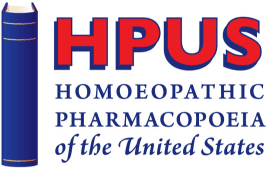Submitting a Monograph
Criteria for Eligibility
PREAMBLE
The Board of Directors of the HPCUS recognizes the following:
- That homeopathy has a strong historical basis in theory and practice which was systematized by Samuel Hahnemann in the late 18th century, but which can be referenced to ancient medical writings and traced throughout its subsequent development to the present day;
- That although the theoretical basis of its scientific methodology has remained constant, its format and documentation have evolved, and will continue to do so;
- That as medical knowledge and the understanding of the nature of health and disease evolve, so medical treatment will evolve;
- That for a medical treatment to be considered homeopathic it must reference, or be referenceable to, the traditionally accepted principles of homeopathy. Such referencing will form the “bridge” that will allow for the scientific evolution of homeopathy. The principles and doctrine of homeopathic practice include, but are not limited to, the following:
- The Law of Similars
- Traditional homeopathic provings
- Cured symptoms
- Toxicologic data
- Hering’s direction of cure
- That the adoption of these principles and subsequent criteria will protect the integrity of homeopathy as it has been known until now, and also protect, without limiting, the possibility of its future development.
Criteria
To be eligible for inclusion in the Homœopathic Pharmacopœia of the United States, the drug must meet criteria 1, 2, 3, and at least one of 4, 5, 6, or 7 as set forth below:
- The HPCUS has determined that the drug is safe and effective.
- The drug must be prepared according to the specifications of the General Pharmacy and relevant sections of the Homœopathic Pharmacopœia of the United States.
- The submitted documentation must be in an approved format as set forth in the relevant sections of the Homœopathic Pharmacopœia of the United States.
- The therapeutic use of a new and non-official homeopathic drug is established by a homeopathic drug proving and clinical verification acceptable to the HPCUS. During the period of clinical verification the drug will be accepted for provisional review and should be available on a monitored basis. Refer to the guideline for Homeopathic Drug Provings and the guideline for Clinical Verification for further information.
- The therapeutic use of the drug is established through published documentation that the substance was in use prior to 1962. This documentation must include the symptom picture, including subjective and any available objective symptoms. Such use and documentation may include but are not limited to the medical literature of the following homeopathic authors: S. Hahnemann, C. Hering, T.F. Allen, H.C. Allen, J.H. Clarke, and J.T. Kent.
- The therapeutic use of the drug is established by at least two adequately controlled double blind clinical studies using the drug as the single intervention; the study is to be accompanied by adequate statistical analysis and adequate description of the symptom picture acceptable to the HPCUS which includes the subjective symptoms and, where appropriate, the objective symptomatology.
- The therapeutic use of the drug is established by a) data gathered from clinical experience encompassing the symptom picture, pre- and post-treatment, including subjective and any available objective symptoms or b) data documented in the medical literature (all sources of medical literature may be considered on a case by case basis) subjected to further verification (statistical and/or other forms of verification).
